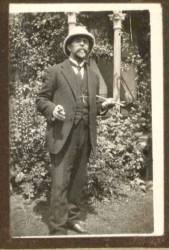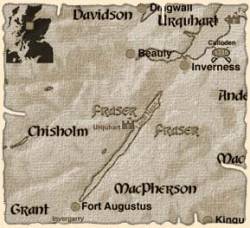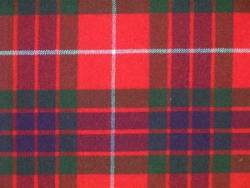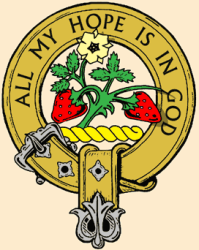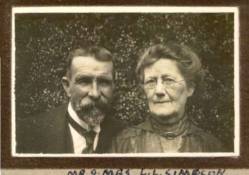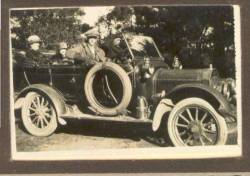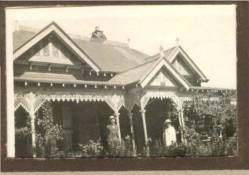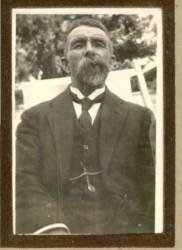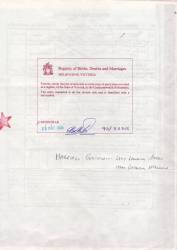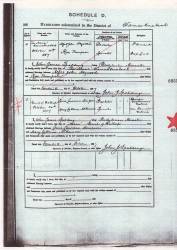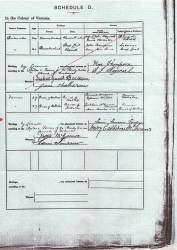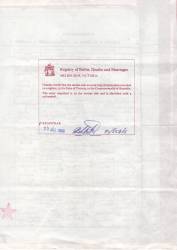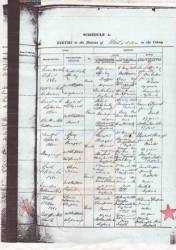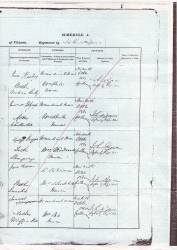

 Lewis Lawrence Simpson
Lewis Lawrence Simpson 


General Notes
A kind and loving man.
For many years he ran a thriving general merchant store there (bookshop and framers in Sturt Street, Ballarat) known as "Simpson's Emporium".
Their home was 106 Drummond Street North, Ballarat, and was called "Ailsa". The building is still standing and is now the Ballarat Surgical Clinic, opposite the St. John Of God Hospital.
The Simpsons are a lowland sept of the Fraser clan. They probably derived their name from the first name commonly used by the Fraser clan chiefs "Simon". This became "son of Simon" or "son of Syme", then later "Sim-son", and finally to "Simpson".
The Simpsons were likely bonded to the Lord Lovats of Fraser (who most often used the name Simon - eg. the famous Simon Lord Lovat), and they probably lived around Inverness, the river Ness and Loch Ness, in the Lowlands of Scotland.
In addition Simpson is an old Anglo-Saxon family name common in the border regions between England and Scotland during medieval and renaissance times. There are still many Simpsons in this region today.
It is likely they spread from here south into central England, and also north into the Scottish lowlands where they became affiliated with the Fraser Clan.
Fraser of Lovat Clan
History
Robert the Bruce’s chamberlain was Sir Alexander Fraser and it is from his brother, Sir Simon Fraser, that the Frasers of Lovat descend. Sir Simon acquired the Bisset Lands around Beauly when he won the hand of its heiress, and these lands became the family home.
A record from 1367 describes Hugh Fraser as ‘Lord of Lovat and portioner of Ard’, the first known connection the Frasers had with Lovat land. By 1422 the Frasers of Lovat had extended their lands to include Stratherrick by Loch Ness.
Around 1460 Hugh Fraser became the first Lord Lovat or Lord Fraser of Lovat. The chiefs made Beaufort Castle their seat in 1511, and it is still Fraser property today.
A memorable battle arising from a disputed chiefship was between the Frasers of Lovat and the MacDonalds of Clanranald in 1544, which became known as the Battle of the Field of Shirts. It earned this name because in the heat of that day the men fighting had to throw off their heavy plaids and continue to battle in their white shirts.
The romantic name belies the horror on an area of wild marshland alongside Loch Lochy where, of the hundreds of men who came at each other, only five Frasers and eight MacDonalds remained alive. Both the Lovat chief and his son and heir were among the dead and were buried at Beauly Priory.
Despite the costs of that day, the Lovat Frasers multiplied and created many branches, such as Fingask, Reelig and Inverallochy.
A strong Lovat representation was present at Culloden Moor in April 1746, some believe as many as two battalions. After the disaster on the field, the Fraser estates were plundered by Cumberland and his troops. The chief was captured at Loch Morar and taken to London to be beheaded at Tower Hill one year after the Battle.
The Frasers of Lovat later helped in the raising of Highland regiments that saw action across the British Empire, fighting in the American War of Independence, in Quebec, and in the Napoleonic Wars.
In 1899 Lord Lovat raised the Lovat Scouts for service in the Boer War.
The Lovat Scouts went on to win honours in the First World War and during World War 2, led by the then Lord Lovat along with his piper, Bill Millen. They landed on the Normandy beaches on D Day and were part of the dramatic relief of the Pegasus Bridge, a vital strategic position.
Lord Lovat, a much respected and decorated war hero died in 1996 and was buried to the accompaniment of his trusted piper.
Loch Lochy - site of the Battle of the Field of Shirts in 1544
Gaelic Name: Friseal
Motto: Je suis prest (I am ready)
Origin of Name: French fraisse (Strawberry)
Lands: East Lothian, Aberdeenshire
Pipe Music: Lovat's March
Fraser Clan
History
The origin of the name Fraser is believed to lie with a knight called Frezel from the lordship of La Frezeliere in Anjou, who came to Scotland in the 11th century.
In 1160 the name of Simon Fraser is recorded as the owner of Keith lands in East Lothian, and he gave the church there to Kelso Abbey. Simon became a popular name for Frasers. His grand-daughter became the heiress to the Keith lands and they passed to the family who would adopt Keith as their name.
Oliver Castle and Tweeddale passed to the Frasers until the wars of independence, after which the clan moved north and expanded across the Highlands. During the wars, Sir Simon Fraser fought for Wallace at Rosslyn in 1302, defeating the English. While fighting for Robert the Bruce in 1306 he was captured, and like Wallace, was executed in the cruellest style, being hung and quartered.
The co-heiress of the Earl of Ross was Joanna, and her hand was won by Sir Alexander Fraser of Cowie and Durris in 1375, bringing to the family the lands of Philorth and the castle now called Cairnbulg.
In 1592, Sir Alexander, 8th of Philorth, was given a charter by James VI to the fishing village of Faithlie. He improved the harbour, making the area a thriving town, which soon became a free port and burgh called Fraserburgh.
Fraserburgh was to have had a university but the religious troubles and competition from Aberdeen stemmed the town’s growth. By building Fraserburgh Castle the Laird bankrupted himself, and had to sell the Castle of Philorth. The marriage of Alexander, 9th of Philorth, brought him the title of Lord Saltoun, a title bourne by the Clan Fraser chiefs till today.
The first Lord Fraser was created in 1663 by Charles I, and occurred at a time when the chiefship was disputed by the Frasers from Oliver Castle who had settled in Mar.
It was Andrew Fraser, 1st Lord Fraser, who completed Castle Fraser.
Gaelic Name: Friseal
Motto: All my hope is in God
Badge: Yew
Lands: East Lothian, Aberdeenshire
Origin of Name: French fraisse (Strawberry)
-
Ancestor Pedigree Chart
-




 - d.1722
- d.1722



 - b.1706 in England
- b.1706 in England







 - b.1737 in England d.1818 in England
- b.1737 in England d.1818 in England








 - b.26 Dec 1709 in England
- b.26 Dec 1709 in England






 - b.1768 in Pytchley, Northamptonshire, England d.11 Sep 1837 in England
- b.1768 in Pytchley, Northamptonshire, England d.11 Sep 1837 in England



 - d.23 Dec 1753 in England
- d.23 Dec 1753 in England


 - b.1738 in Maulden, Bedfordshire, England
- b.1738 in Maulden, Bedfordshire, England



 - b.29 Oct 1699 in England d.08 May 1786 in England
- b.29 Oct 1699 in England d.08 May 1786 in England
 - b.25 Apr 1823 in Pytchley, Northamptonshire, England d.16 Jul 1895 in Birchip, Victoria, Australia
- b.25 Apr 1823 in Pytchley, Northamptonshire, England d.16 Jul 1895 in Birchip, Victoria, Australia


 - b.1742 d.11 Jun 1826 in England
- b.1742 d.11 Jun 1826 in England

 - b.1779 in Northamptonshire, England d.1850 in Kettering Workhouse, Northamptonshire, England
- b.1779 in Northamptonshire, England d.1850 in Kettering Workhouse, Northamptonshire, England




- b.06 Oct 1860 d.1932


 - b.1828 d.08 Jan 1910
- b.1828 d.08 Jan 1910


-
-
Individual Additional Information
-
Associated external link media/ind00018.htm
 Details of Lewis' family with Mary Catherine McKinnon
Details of Lewis' family with Mary Catherine McKinnon
Page last modified
This page is within a frameset. View the entire genealogy report of Simpson families, or surname index of Simpson pedigrees or report summary Simpson heritage from 'Moore, Simpson, Ballard Family Tree - England and Scotland to Australia'.
Software to Create Pedigree Charts.
Copyright © 2011 GenoPro Inc. All rights reserved.
